[Elderberries: The Genus Sambucus East of the Cascade
Mts. of Oregon and Washington]
Black Elderberry, Rocky Mountain Elder
Sambucus racemosa var. melanocarpa
Synonyms: Sambucus melanocarpa, Sambucus racemosa ssp. pubens var. melanocarpa
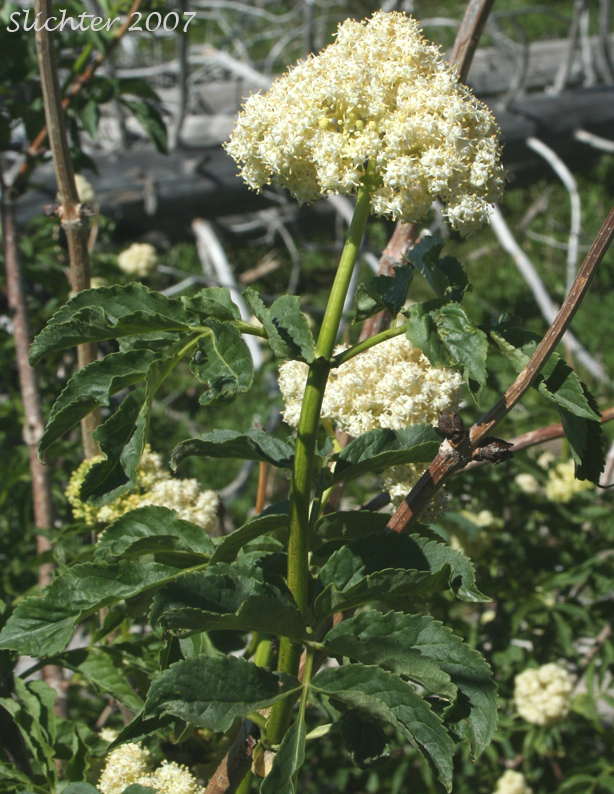 -
- 
The photo at left shows black elederberry as seen at the Hat Pt. Lookout Tower in Hell's Canyon National Recreation Area.........June 26, 2007. The photo at right shows black elderberry in bloom in talus near the Road's End Trailhead just north of FS Road #1640, Malheur National Forest.....July 7, 2023.
Characteristics:
Black elderberry is a tall shrub to small tree with one to many
stems arising from the base to 1-4 meters in height. The twigs are thick with
soft wood and a pithy central area. The outer surface of the younger twigs is
often glaucous. The leaves are pinnately-compound with 5-7 elliptic to lanceolate
leaflets which taper to a point at the tip and are rounded, but somewhat asymmetrical
at their base. The leaves are a shiny green above and a duller green with pubescence
below. The leaflets range from 5-15 cm long.
The inflorescence is a hemispheric panicle that is rounded on
top, broader than long, and somewhat like an umbel, but not as broad as the
inflorescence of blue elderberry. The creamy or white flowers are 3-6 mm across
with the corolla lobes spreading to somewhat reflexed. The fruit are shiny black
or purple-black berries.
The black elderberry contains high levels of hydrocyanic acid
which can lead to cyanide poisoning if consumed. I've seen some books that say
the berries are safe to consume if the the seeds are strained out, but I would
caution not to eat the fruits of this plant!
The various species of elderberry are all suitable as large
shrubs for native woodland or riparian plantings. Be aware however, that birds
upon eating the fruits, will soon be spreading the seeds to new, hopefully desirable
locations!
Habitat:
Black elderberry may be found in moist woods, moist roadside
ditches, and riparian areas.
Range:
Black elderberry may be found from central British Columbia
south to the east of the Cascade Mts to the eastern slopes of the Sierra Nevada
Mts in California and east to Alberta and south through the Rocky Mts to Nevada,
and northern Arizona and northern New Mexico.
Similar Species:
Red Elderberry: Sambucus racemosa var. arborescens - Fruits
mostly bright red. Leaflets pubescent beneath (often only on the midrib or main
veins). Found primarily west of the Cascade crest.
Blue Elderberry: Sambucus cerulea -

The photo above shows a close-up of the dark berries and compound pinnate leaves of black elderberry as seen in talus to the southwest of Bench Lake at the eastern corner of Mt. Adams..........August 8, 2004.
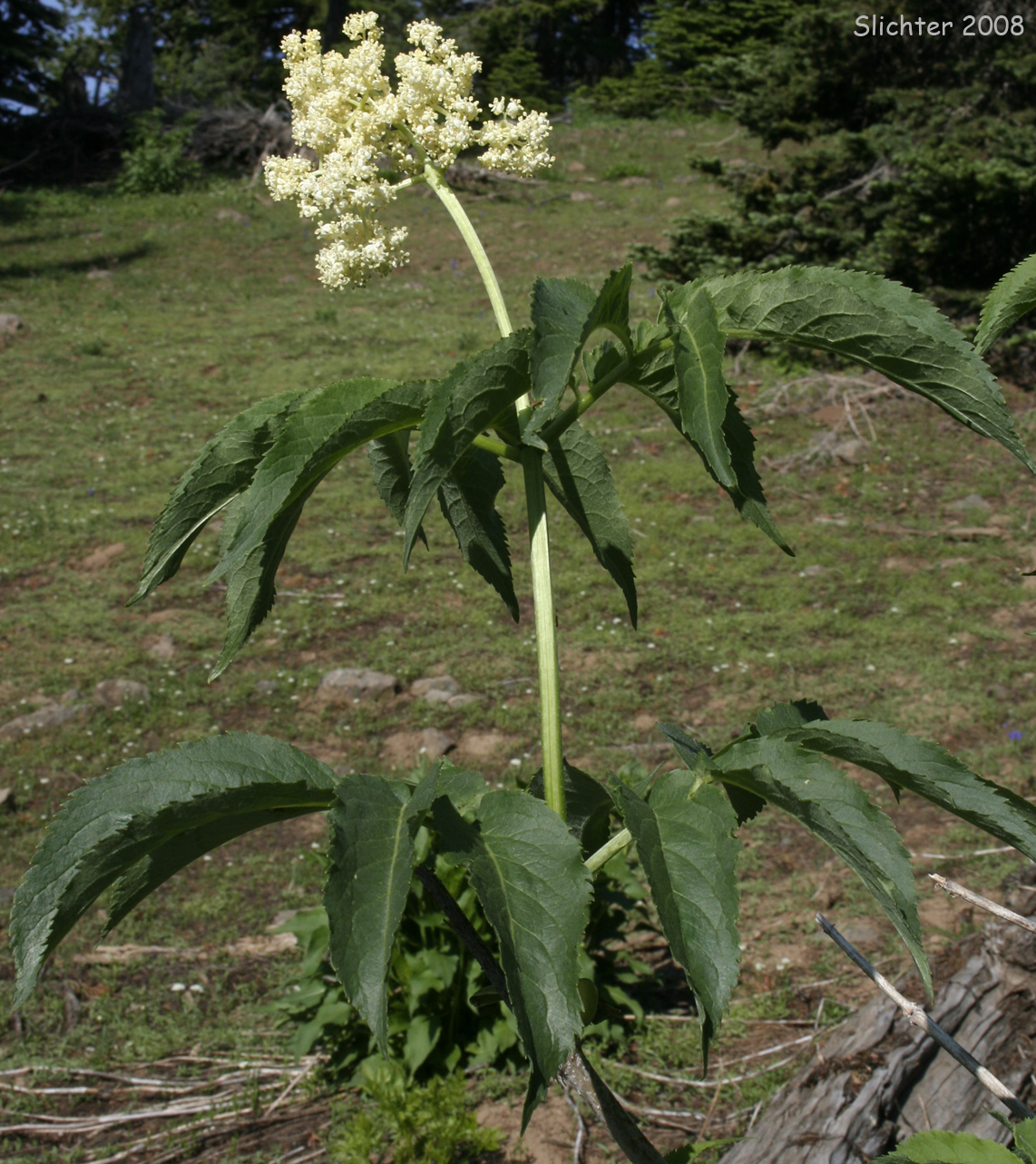 -
- 
Both of these photos show black elderberry as seen in bloom in moist, open forest directly to the west of Misery Campground in the Umatilla N.F. of southeastern Washington..........July 7, 2008. Click each photo to see enlarged versions.
 -
- 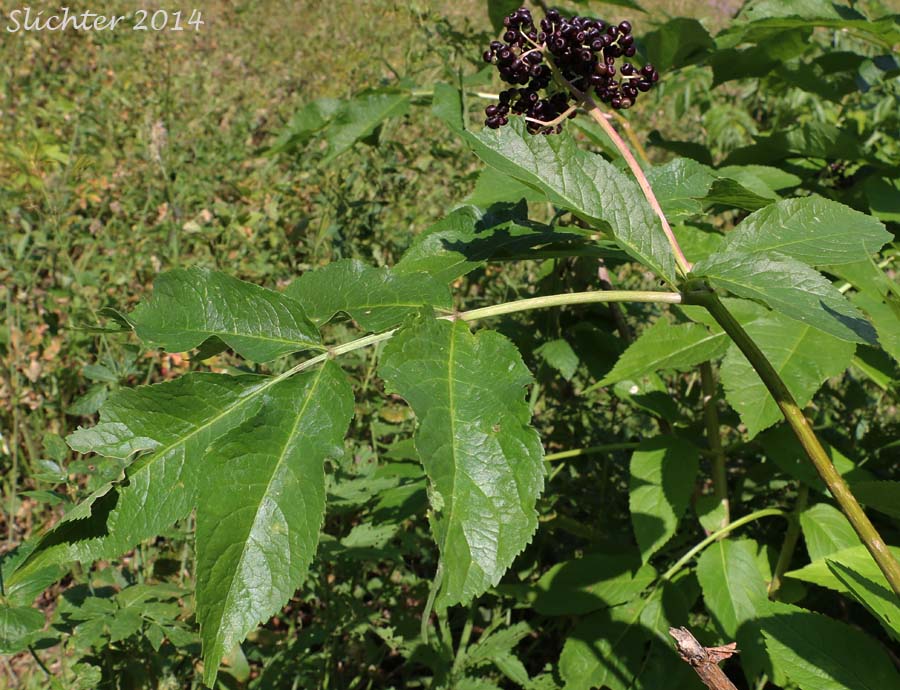
Black elderberries with ripening fruits as seen on north-facing slopes of Lookout Mountain along the Lookout Mountain Trail #804, Ochoco National Forest...........August 10, 2014.
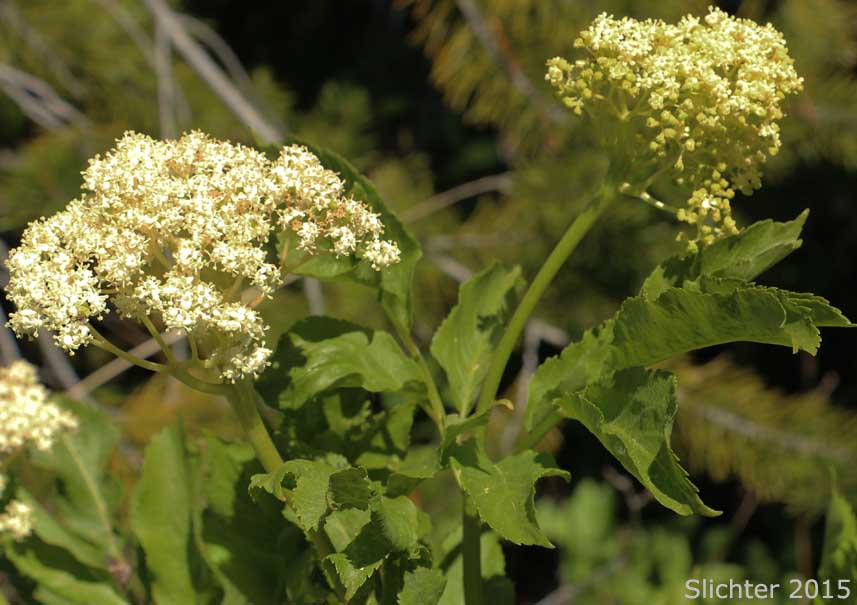 -
- 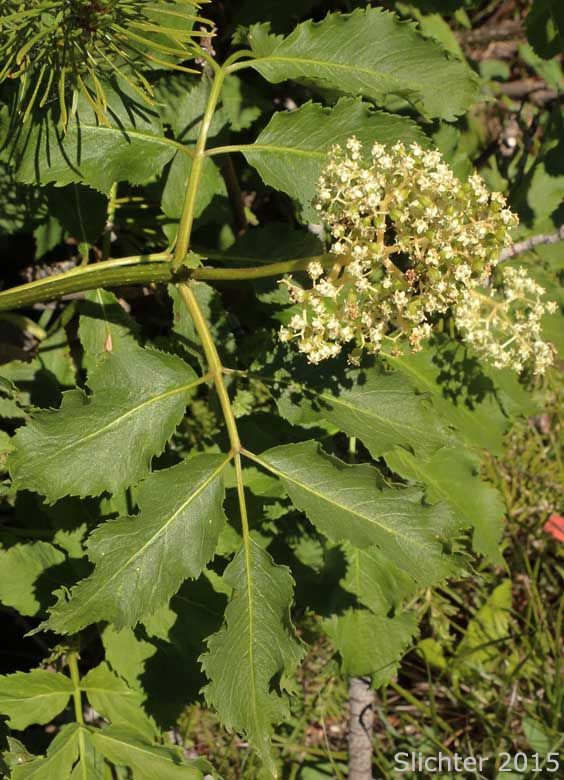
Black elderberry in bloom along Forest Service Road #2630 several hundred yards east of Pisgah Springs, southern edge of the Bridge Creek Wilderness, Ochoco National Forest........June 13, 2015.
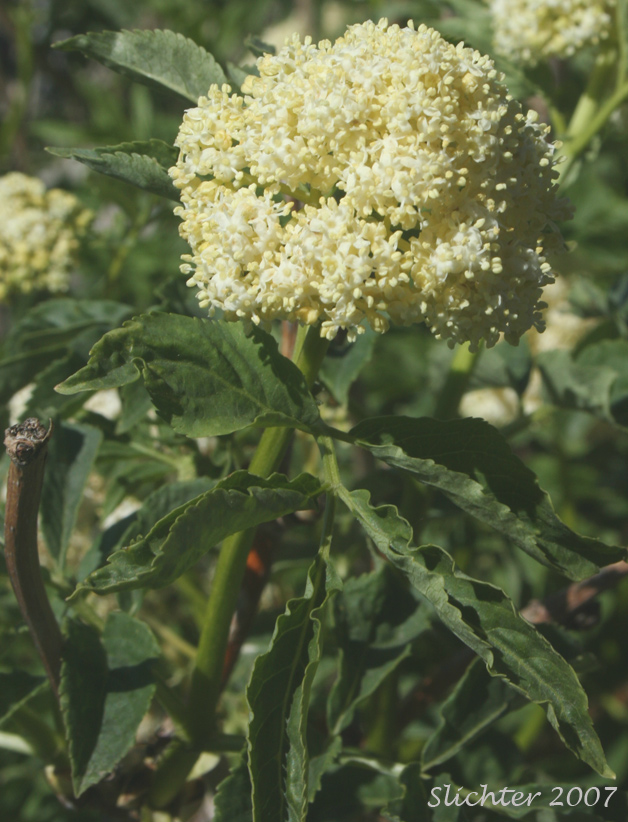 -
- 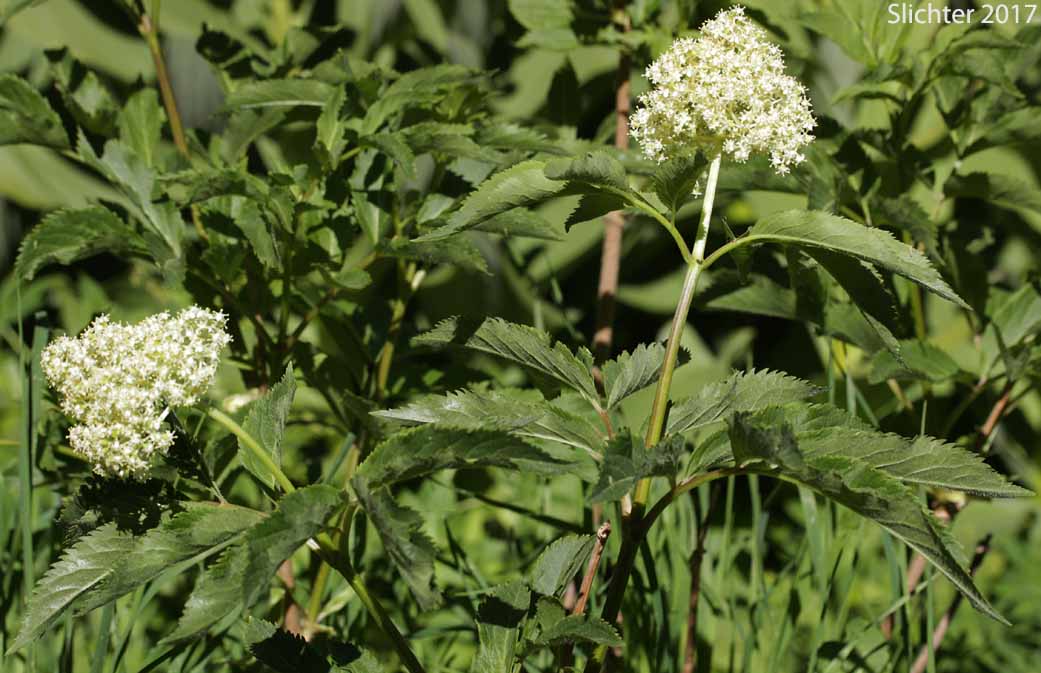
The photo at left shows another view of black elederberry as seen at the Hat Pt. Lookout Tower in Hell's Canyon National Recreation Area.........June 26, 2007. The photo at right shows black elderberry in bloom along the Mother Lode Trail #808A adjacent to the old mine site, Lookout Mountain, Ochoco National Forest.
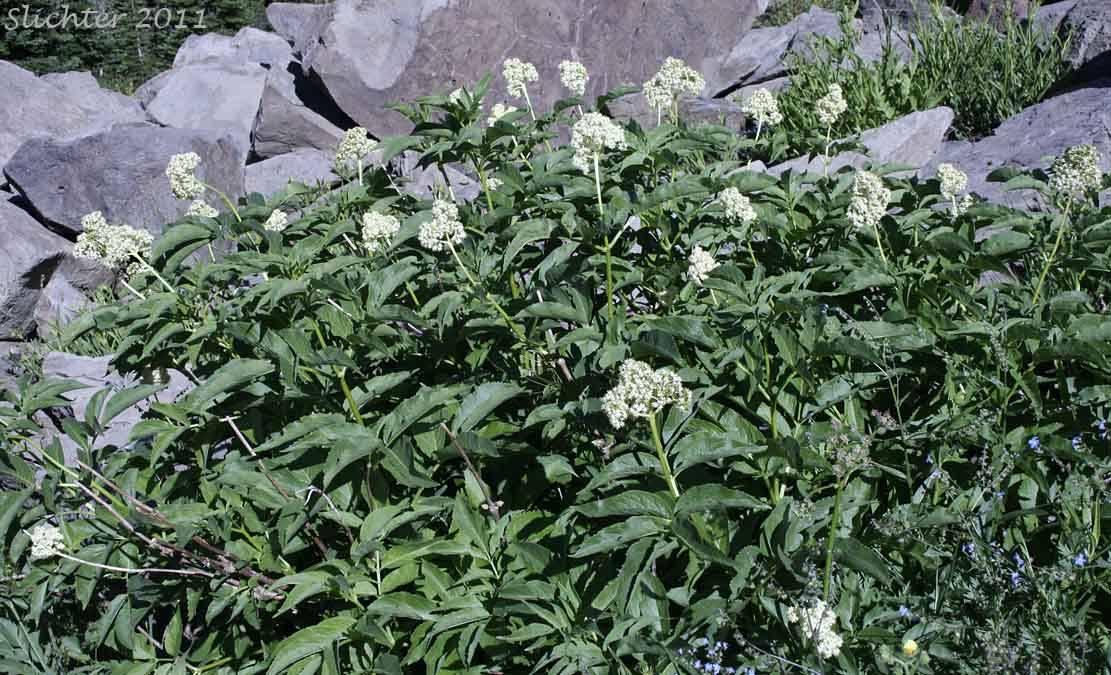
Black elderberry in bloom amidst large boulders on a talus slope along the Roads End Trail about 100 meters in from the trailhead, Strawberry Mountain Wilderness..........August 19, 2011.
Paul Slichter
